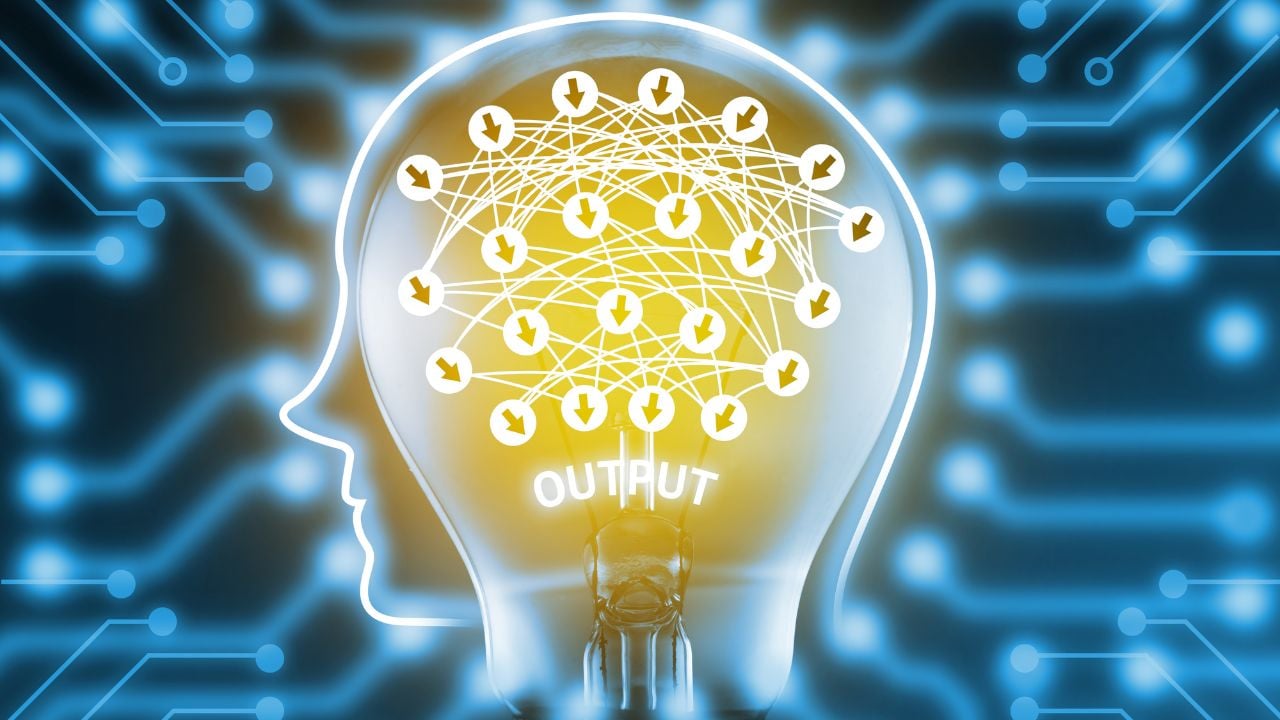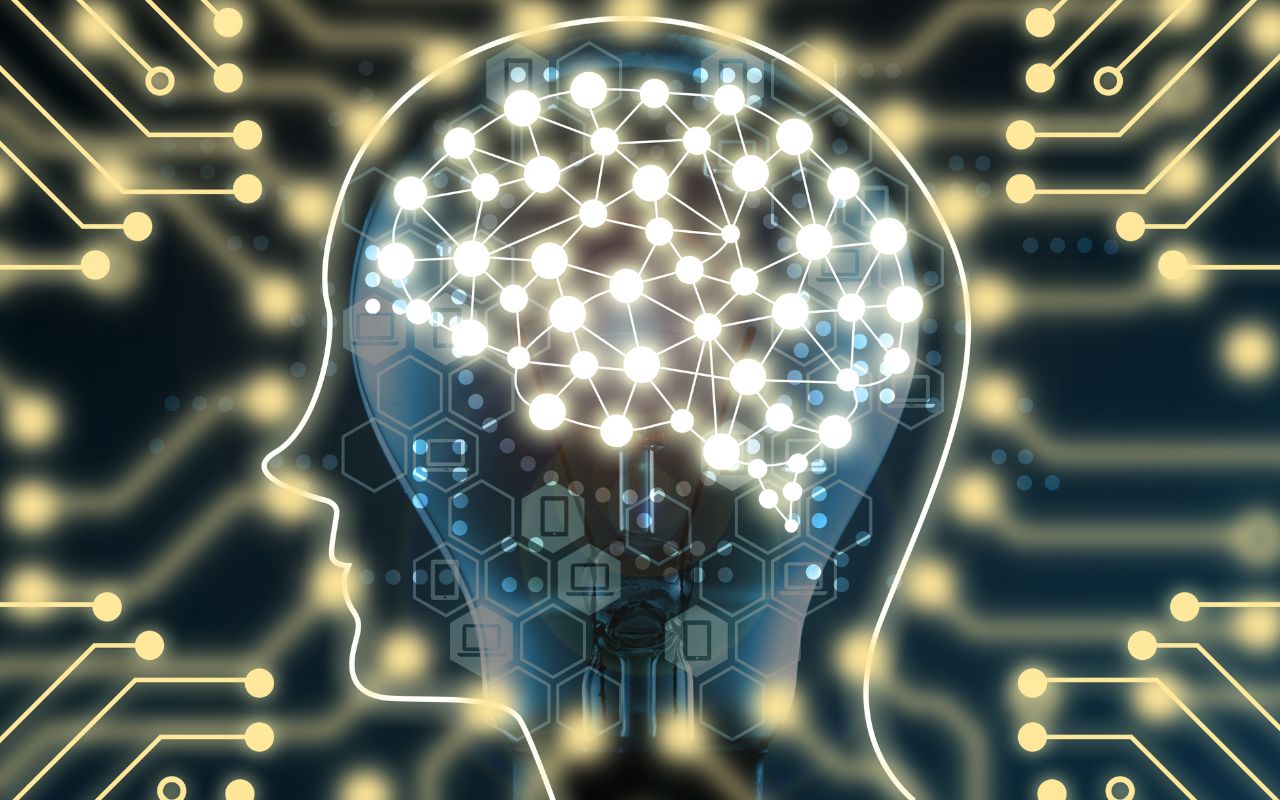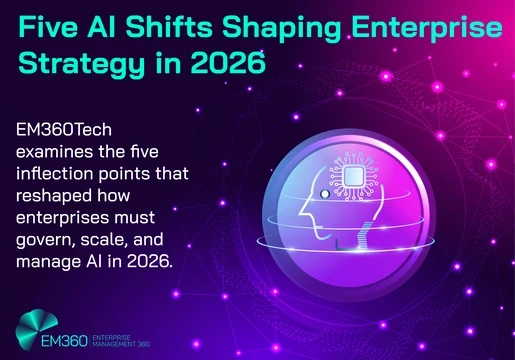If you’ve been following the most recent advancements in AI over the past few years, you’ve probably heard of deep learning and machine learning.
These two subfields of AI form the backbone. of many of the technologies we use today. They're what make self-driving cars work as they should, what help AI chatbots like ChatGPT remember your conversations, and what allow you to unlock your phone with your face.
While Deep Learning and Machine learning both play an equally important role in the development of AI systems, it's important to note that they’re not the same thing.
To understand why, we need to delve deeper into how these two powerful technologies work. This article will compare the roles of Machine learning and Deep Learning in the development of AI, exploring how each subfield works and what makes them different.

What's the difference between deep learning and machine learning?
To understand the difference between deep learning and machine learning, you first need to understand that deep learning is essentially a subset of machine learning.
More specifically, Deep learning is considered a more sophisticated approach to machine learning. That's because it uses artificial neural networks (ANNs) rather than traditional machine learning techniques to learn from data, allowing it to process unstructured data such as audio, images and text.
This is different to traditional machine learning, which can generally only allow computers to learn from labelled, structural data.
To dig deeper into this distinction, let's explore how deep learning and machine learning work in more detail individually.
Understanding Machine Learning
Machine learning is a field of AI that allows computers to learn from data without being explicitly programmed. This means that machine learning algorithms can automatically identify patterns and make predictions based on data, rather than being continuously told to do us.
How does machine learning work?

With machine learning, computers are fed structured data and learn to become better at evaluating and acting on that data over time. Machine learning algorithms can be classified into two main categories: supervised learning and unsupervised learning:
- In supervised learning, the algorithm is given a set of data that is labelled, meaning that each data point is associated with a desired outcome. The algorithm then learns to map the input data to the desired outcome. A supervised learning algorithm could be trained to classify images of cats and dogs by being shown thousands of images of cats and dogs with the correct labels.
- In unsupervised learning, the algorithm is given a set of data that is not labeled. The algorithm then tries to identify patterns in the data without being given any guidance. For example, an unsupervised learning algorithm could be used to cluster a set of documents based on their similarity. The algorithm would then group the documents into clusters based on the patterns it has observed in the data.
Machine learning algorithms can also be classified into different types based on the specific task they are designed to perform.
Some of the most common types of machine learning algorithms include:
- Classification: This type of algorithm is used to assign data points to one of two or more categories. For example, a classification algorithm could be used to classify email messages as spam or not spam.
- Regression: This type of algorithm is used to predict a continuous numerical value. For example, a regression algorithm could be used to predict the price of a house based on its features.
- Clustering: This type of algorithm is used to group data points together based on their similarity. For example, a clustering algorithm could be used to group customers together based on their buying habits.
- Reinforcement learning: This type of algorithm is used to learn how to make decisions in an environment where the consequences of actions are not always immediate or obvious. For example, a reinforcement learning algorithm could be used to train a robot to play a game.
Examples of Machine Learning
Machine learning has become an integral part of our daily lives, finding applications in a wide range of industries and everyday tasks.
A common example of machine learning is spam filtering. Spam filters are trained on a large set of emails, including both spam and legitimate emails, and learn to identify patterns that are common in spam emails, such as certain words, phrases, and sender addresses. This allows the filter to automatically identify and filter out spam emails, reducing the amount of unwanted emails that users need to deal with.
Another example of machine learning is in self-driving cars. Machine learning enables self-driving cars to navigate roads, avoid obstacles, and make decisions in real-time. These algorithms analyze sensor data, including cameras, radar, and lidar, to perceive the environment and make driving decisions.
Understanding Deep Learning
Deep learning is a subset of machine learning that uses artificial neural networks (ANNs) to learn from data. Inspired by the structure of the human brain, ANNs consist of layers of interconnected artificial neurons that can process and analyse information.
Each neuron receives inputs from other neurons, performs a transformation, and then passes the output to other neurons. This interconnected network allows ANNs to learn from data by adjusting the weights of the connections between neurons.
Deep learning algorithms are designed to handle large volumes of complex data, making them highly effective in tasks like natural language processing (NLP) and image recognition.
How does Deep Learning work?

Deep learning algorithms learn from data by optimizing a loss function that measures the difference between the model's predictions and the actual labels. This process involves adjusting the weights of the connections between neurons, gradually reducing the loss and improving the model's performance.
Deep learning can be split into multiple different architectures, each with specific arrangements of ANNs that are employed for different tasks.
Some common deep-learning architectures include:
- Convolutional Neural Networks (CNNs): Designed for image recognition, CNNs extract hierarchical features from images, identifying patterns and objects.
- Recurrent Neural Networks (RNNs): Specialized for sequential data, RNNs retain memory and context, enabling them to process language, music, and time-series data.
- Long Short-Term Memory (LSTM) Networks: A type of RNN, LSTMs address the vanishing gradient problem, making them well-suited for long-range dependencies in sequential data.
Examples of Deep Learning
Deep Learning has found its place in various industries, including healthcare, finance, and technology. One of the main use cases for deep learning is image recognition. Deep learning allows computers to identify and classify objects in images and videos with remarkable accuracy. This now is crucial to things like facial recognition systems, and image search engines, making it easier to search for images and for computers to understand them.
Deep learning also plays a key role in Natural Language Processing (NLP), enabling computers to understand and process human language. This has led to improvements in speech recognition, machine translation, chatbots, and sentiment analysis. For example, deep learning is used to power Google Translate, which can translate languages with remarkable accuracy.
Another key use case FOR deep Learning is in medical diagnosis to assist doctors in identifying diseases by analyzing medical images, such as X-rays, MRI scans, and pathology slides. This has led to the development of tools that can detect subtle patterns and features that may be missed by the human eye, improving diagnostic accuracy.
In drug discovery, deep learning is used to design new drugs and therapies by analyzing molecular data and identifying potential drug targets.
Deep Learning vs Machine Learning: Key Differences
As we mentioned earlier, Deep Learning is a essentially subset of machine learning. This means that deep learning algorithms are a type of machine learning algorithm rather than a separate field entirely.
Still, several characteristics make these two subfields of AI different. For one, Deep learning always uses the ANN algorithm, while Machine Learning uses a range of different algorithms depending on its application.
Another key difference lies in the type of data they learn from. Machine learning requires labelled data because it relies on the presence of known answers to guide the learning process. This means that the data must be pre-classified or labelled with the desired outcome for the model to learn from it effectively.
Deep learning, on the other hand, can learn from unlabeled data because it uses artificial neural networks (ANNs) to extract features and patterns from the data without the need for human intervention. This is because deep learning algorithms can extract features from data automatically, which is a complex and time-consuming task that would typically require human experts.
Here is a table summarising the other main differences between Deep Learning and Machine Learning:

In general, deep learning is more powerful and sophisticated than machine learning. This is because deep learning algorithms can learn from complex patterns in data that would be difficult to capture using traditional techniques.
The best choice for a particular task will depend on the specific requirements of the task. If the task is relatively simple and does not require a lot of data, then traditional machine-learning techniques may be sufficient.
However, if the task is more complex and requires the ability to learn from complex patterns, then deep learning may be a better choice.
Deep Learning vs Machine Learning: Summary
To summarise, here are the key differences between deep learning and machine learning:
Deep Learning:
- A subfield of machine learning that uses artificial neural networks (ANNs) to learn from data.
- Typically supervised learning.
- Typically requires labelled data.
- Uses a deep network with many layers.
- Applications include image recognition, natural language processing, speech recognition, and medical diagnosis.
Machine learning:
- A broader field that encompasses a wide range of techniques for training algorithms to make predictions or decisions based on data.
- Can be either supervised or unsupervised learning.
- Can use labelled or unlabeled data.
- Applications include classification, regression, clustering, anomaly detection, natural language processing, computer vision, and speech recognition.







Comments ( 0 )